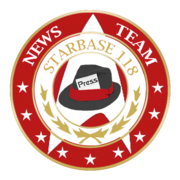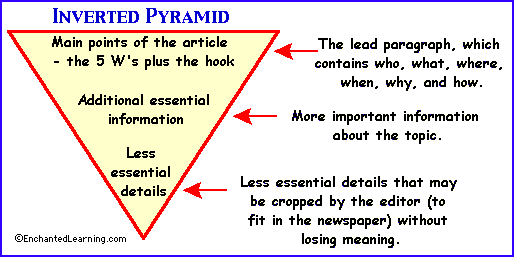Newsies Team: Monthly Plot Summary
Each month, every ship is required to report to the Captains Council with a plot summary. We use those plot summaries as the backbone of our news cycle, helping ensure that we get at least one post a day on the Community News. This guide will help you write a compelling plot summary in the proper format. PurposeWhy do we create monthly plot summaries? They're important because they...
FormatWe post our plot summaries on the Community News as if they're Federation News Service articles. So the goal is to make the plot summaries sound like a compelling "dispatches from the edge" news articles, like the kind you'd see from a mainstream news outlet. As such, all plot summaries should be written from the third-person, omniscient point of view. For example: "The crew then set out on the long journey, none aware of what they were about to encounter." This is in contrast to the first-person point of view, which sounds like this: "We set out on a long journey..." We expect that 90%+ of all ship reports can be written as standard news articles – meaning that it sounds like something that would be published in a newspaper and could be read by Federation citizens. But we do recognize that there are times when a ship's status and mission are classified, and a newsy style is probably not acceptable. In that case, you can write your report in the format of a "memo" or briefing from Starfleet Command. Style considerationsSome elements of style are different across ships, which can be jarring for readers to see different styling. We try and normalize these styles as much as possible on the Community News, so we ask that you adhere to these specifications:
ExamplesGetting startedBefore you even begin your plot summary, it's really useful to look back at the previous month's plot summary for your ship, which you can find in the FNS Newsroom forum or by scrolling back on the Community News. Read through that plot summary, making note of the headline, introduction, and body content. Consider how far the plot has moved since then. Next, ask yourself:
Now make a quick outline of the top three or four things that happened since then. This should only take a few minutes. The first thing on your list should be the primary driver of the plot – what's the biggest thing that happened? Who was the biggest villain or hero? Try and follow that with the next most important thing. LengthShip reports should be AT LEAST 300 words, but NOT BE any longer than 600 words. Ship reports that are too short don't provide an accurate picture of what's going on and don't play well on the Community News. But reports that are too long are also too tedious to read and often contain details that aren't interesting or important. Even if your ship has been on shore leave, you should still have plenty to write about regarding what various plots are going on! ComponentsIntroductionInstead of starting with the headline, let's start with the introduction. In the news business, we call this the "lede" or "lead," and it's considered the most important part of the story that aims to accomplish three goals:
You'll start the lede with a location marker. Here are a few examples:
Further reading: Body contentNow it's time to get the meat of your article! The most important thing to remember is this: You're not writing a recap of events, but instead an article about the plot. A recap is a story without the interesting characters or dialogue. A news story is a way of boiling the story down to the essentials and presenting them in a way that's compelling. To that end, you'll want to avoid simply recounting a list of what happened. Think instead about packaging the look-back in a way that would make it something someone else would want to read. Avoid rote details that aren't particularly compelling – for example, you don't need to tell the reader that there was a mission briefing unless that briefing was a critical part of the story where something interesting happened. Was the mission briefing where one of the crew members began experiencing symptoms of a plague the crew is desperately seeking a cure for? Then tell us that! You may find it helpful to follow the "inverted pyramid" style of journalistic writing, which means putting the most important and pertinent information at the top. If your lede is about the murder of a colonist, then the first two or three paragraphs should develop that! Who, what, when, where, etc. Unless the focus of this report is solely about crew promotions and mission briefings, those types of things should take up less space, and be towards the end of your report.QuoteEvery summary should include a quote from a character. But here's the important thing: You'll almost definitely want to make up this quote, instead of pulling it from a sim. The goal is not to highlight something from a sim, but instead make the plot summary more "believable" as a piece of news by including something someone would say if they were being interviewed about what happened. Consider how on the evening news, the journalist on the street always asks a passing pedestrian or even the subject of the story what they think about what happened. This quote can come from someone on your crew directly, an MSPNPC, or even someone who doesn't actually appear in your sims but would make sense as someone making a statement to the press. Here are some Examples:
HeadlineNow that you've written your article, it's time to write a punchy headline for your piece. You want to find a way to sum up what happened without reusing the same text as your introduction. The most important consideration here is that it's brief: 140 characters is the absolute maximum to shoot for, going shorter if you can. Check out this article which explains the process of writing a great headline: Here's the Secret to Writing Great Headlines for Your News Stories Here are a few examples:
Wrapping upBefore you submit your article, it's time to do some polishing to make sure it's really ready to go. Please be sure to follow these instructions:
|

